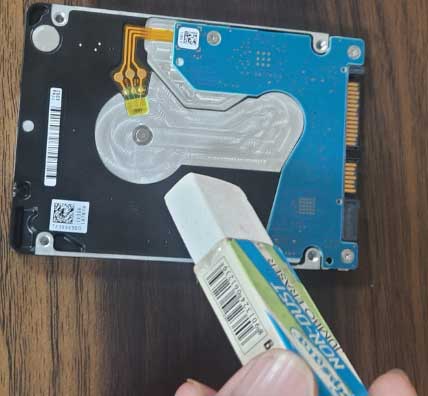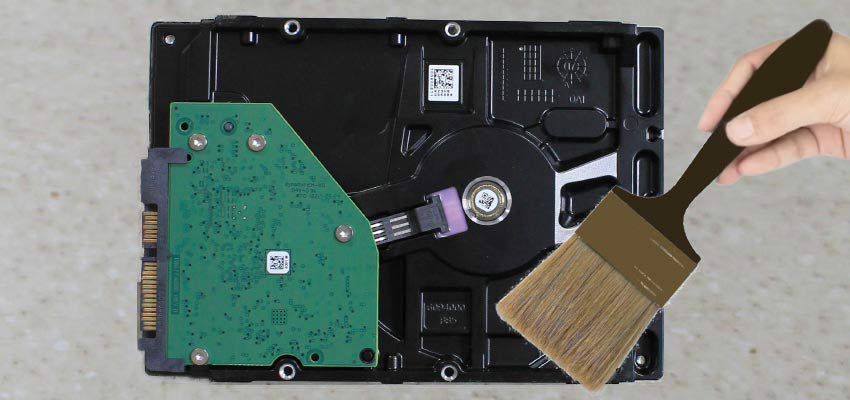Table of Contents
- System Utilities
- Data Wiping Utility
- » Methods and Techniques of Data Wiping
- Keylogger
Data wiping is an essential practice for individuals and organizations that handle sensitive data, such as financial or medical information, and is often required by laws and regulations, such as the General Data Protection Regulation (GDPR) in the European Union and the Health Insurance Portability and Accountability Act (HIPAA) in the United States. Secure data wiper carefully and precisely scan and wipes only what you choose. Entire hard disk data or selected files/folders or internet search history, deleted e-mails, administrator files, text documents, system files etc can be easily and permanently wiped off in destructive and non-destructive wiping mode from hard disk drive or removable media like memory cards, USB drives etc.
To ensure that data wiping is performed securely and effectively, it is important to follow best practices, including using a certified data wiping software, verifying that the data has been wiped, following proper disposal procedures, and considering using a professional data wiping service. It is also important to note that while data wiping can render data unrecoverable, there may be some cases where the data can still be recovered using specialized hardware or software. Therefore, it is important to use data wiping in combination with other security measures, such as encryption and access controls.
Methods of Data Wiping
There are several methods of data wiping, each with its own advantages and disadvantages. The most common methods of data wiping are:
- ➲ Overwriting:
This method involves writing new data over the existing data on a storage device. This process can be performed manually or using software. The number of times the data is overwritten depends on the level of security required. This method is typically used for hard drives.
- ➲ Physical destruction:
This method involves physically destroying the storage device, such as by shredding or pulverizing it. This method is typically used for those kinds of storage devices that cannot be wiped using software or degaussing, such as solid-state drives (SSDs).
- ➲ Degaussing:
This method involves using a strong magnetic field to erase the data on a storage device. Degaussing is typically used for magnetic media, such as tapes or hard drives.
- ➲ Cryptographic erasure:
This method involves using encryption to render the data on a storage device unreadable. This method is typically used for mobile devices, such as smartphones and tablets.
Data Wiping Utility

-
Computer data wiper
Data wiper software erase deleted files folders that includes internet history, cache files, temporary internet files, browser history and other data from different USB drive including pen drive, memory card etc.
-
Data wipe
Data wiping software entirely wipes your data records form the hard disk drive. Software permanently erases temporary internet files, URLs, history, cookies and other files folders information from your system.
-
Data wiper software
Data removing tool delete unused spaces of hard disk partition. Software cleans internet history, typed URL, cookies and cache files. Utility permanently wipes confidential files folders record from storage media.
-
Data wiping utilities
Disk drives data wiping utility wipes data records, cleans your laptop or desktop computer from temporary internal files, cookies, activity traces of application, system files and increase your system performance.
-
Files wiper software
Disk drive wiping software provide user friendly interface and permanently deletes all unused and vacant spaces from hard disk and other media. Utility has non destructive as well destructive functionality.
Popular data wiping techniques
There are several popular data wiping techniques that are used to securely erase data from a storage device. These techniques are designed to ensure that the original data cannot be recovered, even with specialized software. In this article, we will discuss the most popular data wiping techniques and how they work.

-
DoD 5220.22-M
The Department of Defense (DoD) 5220.22-M data wiping technique is a widely used standard for erasing data from a storage device. It involves overwriting the existing data on the storage device with new data or patterns of data multiple times, using a specific sequence of data patterns. The sequence includes the following passes: Pass 1: Writes a series of ones and zeros to the storage device Pass 2: Writes the complement of the first pass (i.e., if the first pass wrote ones and zeros, the second pass writes zeros and ones) Pass 3: Writes a random pattern of data to the storage device Pass 4-7: Repeats passes 1-3 in a different order The advantage of using the DoD 5220.22-M data wiping technique is that it is a widely recognized standard that provides a high level of security. However, it can be time-consuming, especially for large storage devices.
-
NIST 800-88
The National Institute of Standards and Technology (NIST) 800-88 data wiping technique is another widely recognized standard for erasing data from a storage device. It involves overwriting the existing data on the storage device with new data or patterns of data multiple times, using a specific sequence of data patterns. The sequence includes the following passes: Pass 1: Writes a series of ones and zeros to the storage device Pass 2: Writes the complement of the first pass (i.e., if the first pass wrote ones and zeros, the second pass writes zeros and ones) Pass 3: Writes a random pattern of data to the storage device Pass 4: Writes a verification pattern to the storage device The advantage of using the NIST 800-88 data wiping technique is that it is a widely recognized standard that provides a high level of security. However, it can be time-consuming, especially for large storage devices.
-
Gutmann Method
The Gutmann Method is a data wiping technique that involves overwriting the existing data on the storage device with new data or patterns of data 35 times, using a specific sequence of data patterns. The sequence includes a wide range of data patterns, including random data patterns, and is designed to make it impossible to recover the original data. The advantage of using the Gutmann Method is that it provides a high level of security, making it nearly impossible to recover the original data. However, it can be time-consuming, especially for large storage devices.
-
DoD Short
DoD Short is a simplified version of the DoD 5220.22-M data wiping technique. It involves overwriting the hard drive with three different patterns, ensuring that the data is irretrievable. The DoD Short technique is a quick and effective data wiping technique that is often used to erase data from devices that contain sensitive information.
-
Random Data Overwriting
The random data overwriting technique involves overwriting the existing data on the storage device with random data. This technique is often used by data wiping software programs and can be effective in completely erasing the original data. The advantage of using random data overwriting is that it is quick and effective, making it a good option for non-sensitive data. However, for sensitive data, it is recommended to use a more secure data wiping technique, such as multi-pass overwriting or the DoD wiping technique.
-
Write Zeroes
The Write Zeroes data wiping technique is a simple process of overwriting data on the hard drive with 0s. It is a simple and quick method, but it may not be effective for erasing data from devices that contain sensitive data. The Write Zeroes technique is commonly used to erase data from old hard drives before they are reused or recycled.
-
Cryptographic Erase
Cryptographic erase is a data wiping technique that involves encrypting the data on the hard drive with a strong encryption algorithm. The encryption algorithm ensures that the data is unrecoverable unless the key to decrypt the data is known. Cryptographic erase is one of the most secure data wiping techniques and is often used to erase data from devices that contain highly sensitive information.
-
Physical Destruction
Physical destruction is a data wiping technique that involves physically destroying the storage device. It is the most secure data wiping technique as it renders the data on the device irretrievable. Physical destruction involves shredding the hard drive or burning the storage device in a furnace. This technique is often used for erasing data from devices that contain highly sensitive information, such as classified government documents.